Top Phlebotomist Cover Letter Examples
Kick off the perfect job application with this phlebotomist cover letter example, including how to persuade hiring managers that you’re the ideal candidate.
Kick off the perfect job application with this phlebotomist cover letter example, including how to persuade hiring managers that you’re the ideal candidate.
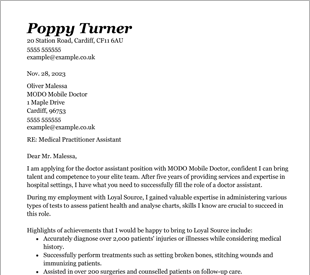
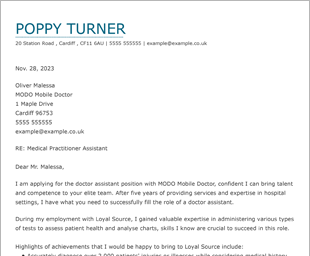
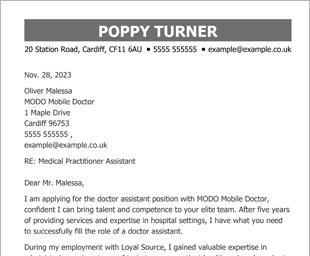
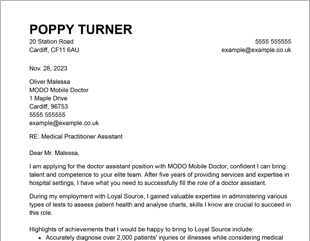
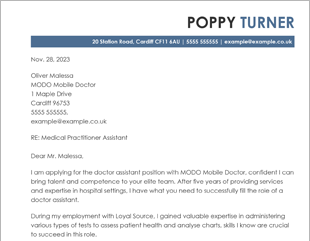
OUR USERS HAVE BEEN HIRED BY
A phlebotomist cover letter is a key staple in securing a job interview and starting your dream career. A cover letter is your opportunity to introduce yourself and persuade the hiring manager that you’re the ideal candidate for the role. While your CV shows off the basics, your cover letter is your chance to grab the hiring manager’s attention and to do this, you’ll need to show off your phlebotomist skills and experience.
This article will teach you the best ways to structure a cover letter and explain the best cover letter writing tips that you need to know.
To help you create a professional cover letter, here is a cover letter example:
Before writing your cover letter, add your contact information in the top left-hand corner of the page. Beneath this, you’ll need to include the right salutation. A salutation is how you address the hiring manager. Include their name rather than generic salutations, such as ”Dear Hiring Manager” or “Dear Sir/Madam.” Next, you can write the three paragraphs of your cover letter as follows:
The first paragraph of your cover letter is designed to hook the hiring manager or recruiter. To do this, you’ll need to include information you think the hiring manager will value. This can be a summary of your total experience or specialist certifications. In this example, the applicant notes his 10 years of experience as a phlebotomist, indicating that he knows to fit the role.
In the second paragraph, you need to go into further depth about your venipuncture experience and key skills. Include references to the right skills using keywords from the job description. In this cover letter example, the applicant states he has never made a labeling mistake and worked on several difficult blood draws. He provides evidence by describing his work on a patient with a vein collapse and another patient with a significant injury. Describing work situations in this manner gives the recruiter context for the applicant’s experience.
The third paragraph should draw your cover letter to a close. To do this, you should first express gratitude to the hiring manager or recruiter for considering your application. You’ll then need to include a call to action that motivates a hiring manager to contact you or invite you to an interview. In this example, the applicant states that he would like to discuss his experience further and describe how he plans to offer his services to the business he is applying to.
You’ll then need to provide a professional sign-off. This can be either “Kind regards” or “Sincerely.
A cover letter is an essential component of a job application. This is because a phlebotomist CV doesn’t typically provide enough detail to convince a hiring manager. It’s also an important addition as you can provide specific anecdotes about your experience. They’re also especially important if you don’t have much experience, as cover letters allow you to explain why you’re the ideal candidate despite little experience. You can use a cover letter builder or a cover letter template to create your cover letter more easily.
The best cover letter should be around three-quarters of a page. With this length, you’ll include enough information to persuade the hiring manager but not enough to over-explain or bore them.
This cover letter works if you don’t have much experience. Instead of focusing on experience, you can talk about your academic career. Try to focus on the skills you gained while training or any special certifications. You can also include references to volunteer opportunities, such as volunteering in hospitals or health care facilities.
We personalize your experience.
We use cookies in our website to ensure we give you the best experience, get to know our users and deliver better marketing. For this purpose, we may share the information collected with third parties. By clicking “Allow cookies” you give us your consent to use all cookies. If you prefer to manage your cookies click on the “Manage cookies” link below.